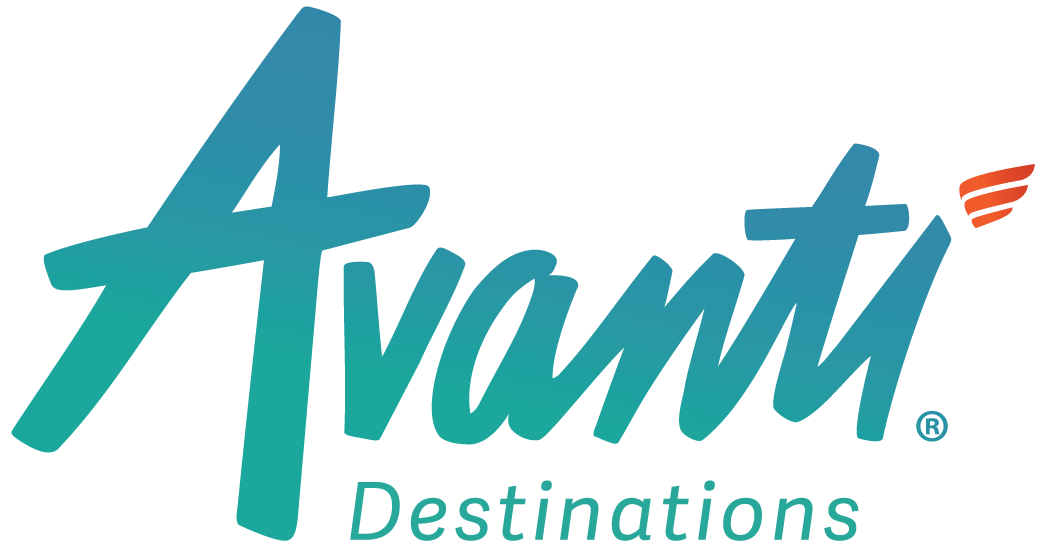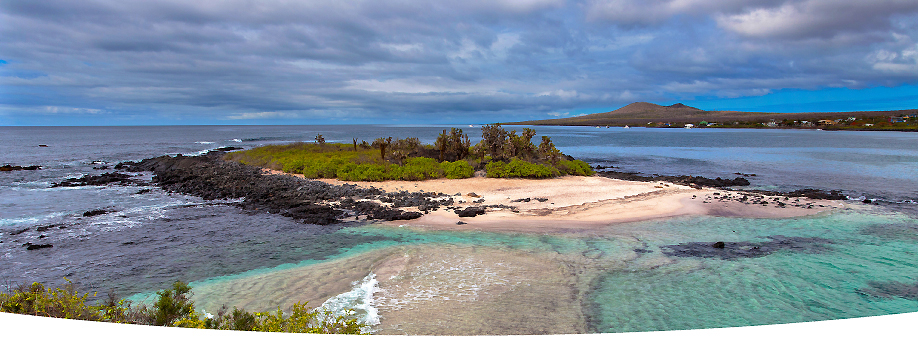

The Galapagos Loop:
Santa Cruz, Floreana & Isabela
Santa Cruz, Floreana & Isabela
Explore the magical Galapagos archipelago from unique accommodations, "hopping" from one beautiful volcanic island to the next. Santa Cruz, Floreana, and Isabela feature their own diverse topography, plant life and wildlife.
ACCOMMODATIONS
• 2 Nights Santa Cruz
• 1 Night Floreana
• 2 Nights Isabela
INCLUSIONS
• All Boat &
Ground Transfers
Ground Transfers
• Guided Island Eco-Tours
• Yacht Exploration Tours
• Yacht Exploration Tours
• Daily Breakfast &
Some Lunches (with Option
to Upgrade to Full Board)
Some Lunches (with Option
to Upgrade to Full Board)
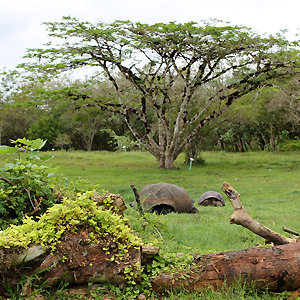
Santa Cruz:
Flight from Quito or Guayaquil to Baltra's airport. Arriving in Baltra we will take a shuttle to Santa Cruz Island, journeying across the island into the highlands, viewing the island's variety of wildlife and geology. Beginning at the coast and traveling north along the road to Puerto Ayora, the road climbs through the agricultural zone and into the mist-covered forests of the highlands. Santa Cruz possesses all of the various life zones present on the archipelago, with wonderful birding opportunities. Whether it's the bright red feathers of a Vermilion Flycatcher or one of Darwin's finches, almost every land bird present on the islands can be found here.
We will stop at one of the ranches; lunch will be served and you will be able to explore the grounds in search of tortoises. After lunch we'll continue to Puerto Ayora for the rest of the afternoon for some leisure time.
(Lunch & Accommodations, Santa Cruz)
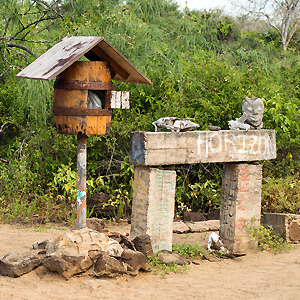
Santa Cruz to Floreana:
This morning after breakfast you will have a 2½-hour speedboat ride to Floreana. This island has perhaps the most interesting human history of all the islands: it is the site of the first "post office," established in 1793 by whalers. It was the first island to be colonized by Ecuadorians, in 1832. A pregnant woman - Margret Wittmer - arrived in 1932 with her husband Heinz and her stepson Harry. They built a house (after spending their first year in a cave) and established a garden. Their son Rolf was the first person to be born in the islands. Descendants of the Wittmers still live on Floreana.
Upon arrival, you'll visit a local farm and enjoy a BBQ lunch. After this, continue on to Asilo de la Paz, a historical site with a pirate cave and freshwater spring. Nearby, you will find a corral with various giant tortoises that were originally owned by residents of Floreana. Along with this path, we will also see Giant tortoise's species from this island that have been recently re-introduced, since they were considered extinct. In the evening, we will have a barbeque on the beach. Here you can enjoy the Floreana's peace and quiet and taste the foods harvested by the island's inhabitants.
(Breakfast, Santa Cruz; Lunch, Dinner & Accommodations, Floreana)
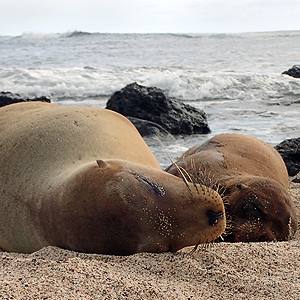
Floreana: Snorkeling La Loberia and Transfer to Isabela:
Today after breakfast, we will begin our excursion to "La Loberia", a sea Lion breeding area. We will take a short walk along the shore to admire the landscape of this visitor's site, then we will start our first marine excursion in the bright turquoise water where you can swim with sea lions, sea turtles, manta rays and a variety of colorful coral fish.
We will enjoy a delicious lunch prepared with the foods harvested from the farm. After this, board the speedboat for the 2½ hour transfer to Isabela Island. Upon arrival at Isabela, you have the rest of the day for relaxing on one of the island's pristine beaches.
(Breakfast & Lunch, Floreana; Accommodations, Isabela)
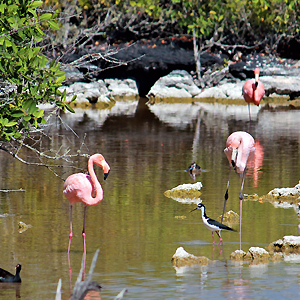
Tortoise Breeding Center, Flamingo Lagoon, and The Tunnels:
After having breakfast, we will have a short ride to the Isabela Breeding Center. Here, we will learn more about the efforts that the Galapagos National Park and the local and international foundations are doing to preserve and promote the reproduction the Giant Tortoises found in Galapagos. Later on, we will continue through a mangrove path that connects with a series of lagoons where the flamingos rest and feed. This walk is ideal for understanding the Galapagos biodiversity, and how the species have adapted to the harsh conditions that the Enchanted Islands have. Today, lunch will be on our own.
In the afternoon, our adventure starts onboard our speed boat with a 45-minute trip. The Tunnels were formed millions of years ago when rivers of liquid magma ran across the island reaching its coastal shore. The cold water froze their superficial layer isolating the interior while liquid magma kept flowing into the sea. When the eruption finished, a hollow structure was formed and its wall later broke allowing water to seep inside, creating a tunnel. Our guide will join us along hundreds of tunnels while we snorkel and encounter marine life such as sharks, lobsters, penguins, sea lions, boobies, marine turtles among other endemic species of the Galapagos. A snack will be served onboard our boat. If lucky enough, we will have the chance to see giant manta rays feeding in open water. Afternoon return to Isabela for accommodation in your selected hotel.
(Breakfast, Lunch, & Accommodations, Isabela)
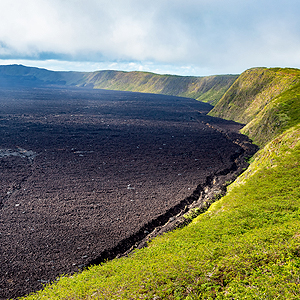
Sierra Negra Volcano - Santa Cruz:
Today we will visit the iconic Sierra Negra Volcano with the second widest crater of an active volcano. We will hike approximately 1.24 miles up to the first lookout point of the volcano, where we will have time to enjoy a snack while we recover the strength and let the amazing view surround us. After our rest, we will continue our hike until reach Sierra Negra furthest lookout point. Later on, we will return to Puerto Villamil, for having lunch and then board the private speedboat, and continue our journey back to Santa Cruz Island.
Once we arrive at Puerto Ayora, we will be free to enjoy and explore this iconic town for the last night in the Enchanted Islands.
(Breakfast, Isabela; Accommodations, Santa Cruz)
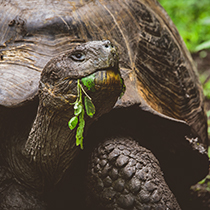
Charles Darwin Station/Transfer to the airport:
After breakfast, we will have a short visit to the Charles Darwin Station. The center is a reservoir of information on habitats and local conservation as well as other fascinating relevant statistics. The most striking attraction of this station is certainly the Tortoise Breeding Center, where it is possible to view tortoises of different shapes and sizes. Additionally, in order to fully take advantage of our visit to the Galapagos Islands, we will be able to visit the station where legendary "Lonesome George" is exhibited as the last of his species. In 2012, after his death, he was shipped to New York to the American Museum of Natural History in order to start an embalming process for his conservation. Lonesome George was exhibited in the museum for one year. Now Lonesome George is back in the Charles Darwin research station, as a "symbol" of conservation. Afterward, transfer to the airport to take your international flight.
(Breakfast, Santa Cruz)
** Itinerary and inclusions are subject to change

